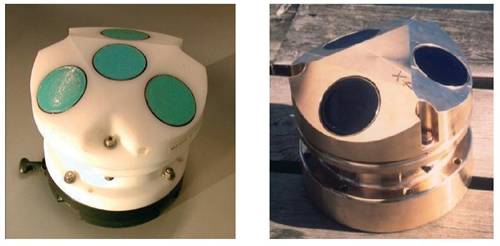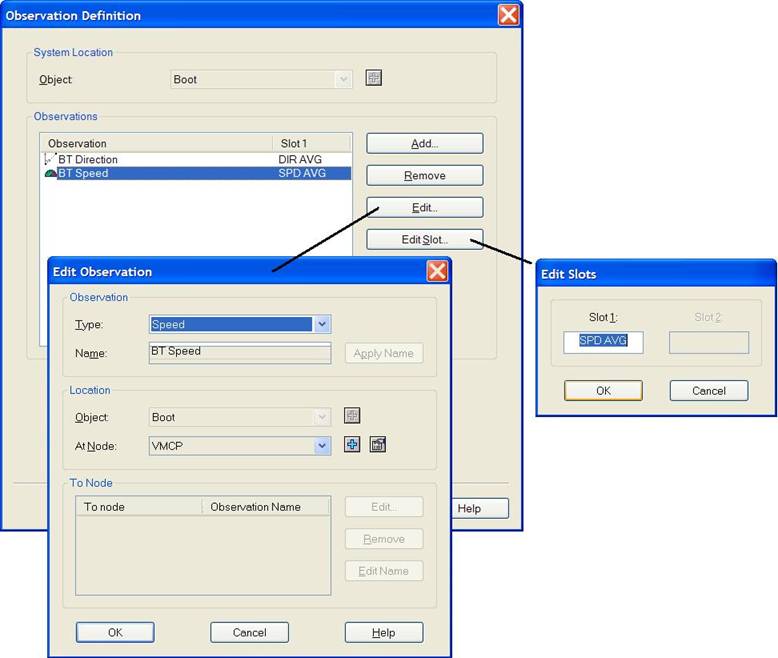Nortek Vessel Mounted Current Profiler (NMEA) - 30
Description
This driver will decode information from a Nortek Vessel Mounted Current Profiler (VMCP).

A VMCP measures the current profile underneath your vessel, and outputs for each depth 'cell' the speed and direction of the current.
An average current speed and direction is calculated for the entire profile.
Typical application for the average current speed and direction would be to use it on a dredging vessel, when dumping rockmaterial from the watersurface onto the seabed, in order to estimate the final dump location. In order to decode observations with current information, please see miscellaneous system "Nortek - Vessel Mounted Current Profiler".
The VMCP can also be used for "bottom tracking", to obtain the vessel's ground speed (SOG) and course over ground (COG).
These two observations can be used to enhance the Kalman filter of the Computation Setup.
In that case the VCMP should be instructed to output the NMEA VTG sentence.
Driver Information
| Driver | Nortek - Vessel Mounted Current Profiler (NMEA) | Interface Type | Serial | Driver Class Type | Terminated <ETX> or <CR><LF> |
|---|---|---|---|---|---|
| UTC Driver | No | Input / Output | Input | Executable | DrvQpsTerminated.exe |
| Related Systems | |||||
| Related Pages | |||||
Decoding Notes
There is no time in the NMEA datastrings. So data will be timestamped whenever it arrives at the serial comport, using the computer's system or PPS time.
Values decoded from the NMEA sentences are converted to survey units/sec and degrees.
A possible checksum at the end of each NMEA sentence is ignored by the driver.
Interfacing Notes
A VMCP unit is normally installed on a vessel in combination with Nortek's SurveyVM™ software, which is interfaced straight to the VMCP unit.
Because the driver is interfaced to the SurveyVM™ software, and not directly to the VMCP unit, it does not need to send request commands in order to receive data.
So a one-way wiring interface cable would be sufficient.
Use the following wiring diagram for a one-way cable:
DB-25 | Sensor | or | DB-9 | Sensor |
| DB-25 | COM | or | DB-9 | COM |
|---|---|---|---|---|---|---|---|---|---|---|
Pin 2 | TXD | Pin 3 | TXD | ----- | Pin 3 | RXD | Pin 2 | RXD | ||
Pin 3 | RXD | Pin 2 | RXD | X | Pin 2 | TXD | Pin 3 | TXD | ||
Pin 7 | SG | Pin 5 | SG | ----- | Pin 7 | SG | Pin 5 | SG |
Default baud rate will be 9600-8-1-none, but it is strongly recommended to increase the baud rate when outputting the ASCII Standard or Extended format, due to the vast amount of bytes sent per profile.
Database Setup
- In order to decode the speed- and course over ground, add a Speed Log System to your template database and select driver "Nortek - Vessel Mounted Current Profiler (NMEA)".
On the second wizard page, add a 'Bearing (True)' observation, and a 'Speed' observation.
The important part is assigning the correct Slot 1:
Slot 1 name for the speed observation must be, in capitals, "SPD VTG".
Slot 1 name for the bearing observation should be, in capitals, "DIR VTG".
Slot Id Summary
Output Format | Decoding | System | Driver | Observation Type | Slot 1 Name | Comment |
|---|---|---|---|---|---|---|
NMEA $--VTG | Ship's speed over ground | Speed Log | Nortek - Vessel Mounted Current Profiler (NMEA) | Speed | SPD VTG | VTG Field 7 (SpeedKnots) is used and converted to [survey units /sec] |
NMEA $--VTG | Ship's course over ground | Speed Log | Nortek - Vessel Mounted Current Profiler (NMEA) | Bearing (True) | DIR VTG | VHW Field 2 (GroundCourse) is used [deg] |
Additional Information
References: Nortek AS publications
